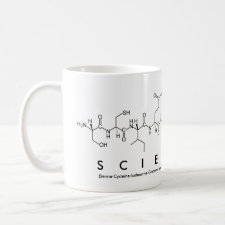
Authors: Moro G, Bottari F, Sleegers N, Florea A, Cowen T, Moretto LM, Piletsky S, De Wael K
Article Title: Conductive imprinted polymers for the direct electrochemical detection of β-lactam antibiotics: The case of cefquinome.
Publication date: 2019
Journal: Sensors and Actuators B: Chemical
Volume: 297
Article Number: 126786.
DOI: 10.1016/j.snb.2019.126786
Alternative URL: https://www.sciencedirect.com/science/article/pii/S0925400519309864
Abstract: A biomimetic sensor for cefquinome (CFQ) was designed at multi-walled carbon nanotubes modified graphite screen-printed electrodes (MWCNTs-G-SPEs) as a proof-of-concept for the creation of a sensors array for β-lactam antibiotics detection in milk. The sensitive and selective detection of antibiotic residues in food and environment is a fundamental step in the elaboration of prevention strategies to fight the insurgence of antimicrobial resistance (AMR) as recommended by authorities around the world (EU, WHO, FDA). The detection strategy is based on the characteristic electrochemical fingerprint of the target antibiotic cefquinome. A conductive electropolymerized molecularly imprinted polymer (MIP) coupled with MWCNTs was found to be the optimal electrode modifier, able to provide an increased selectivity and sensitivity for CFQ detection. The design of CFQ-MIP was facilitated by the rational selection of the monomer, 4-aminobenzoic acid (4-ABA). The electropolymerization process of 4-ABA have not been fully elucidated yet; for this reason a thorough study and optimization of electropolymerization conditions was performed to obtain a conductive and stable poly(4-ABA) film. The modified electrodes were characterized by electrochemical impedance spectroscopy (EIS), scanning electron microscopy (SEM) and cyclic voltammetry (CV). CFQ-MIP were synthesized at MWCNT-G-SPEs by electropolymerization in pH&8776; 1 (0.1 M sulphuric acid) with a monomer:template ratio of 5:1. Two different analytical protocols were tested (single and double step detection) to minimize unspecific adsorptions and improve the sensitivity. Under optimal conditions, the lowest CFQ concentration detectable by square wave voltammetry (SWV) at the modified sensor was 50 nM in 0.1 M phosphate buffer pH 2
Template and target information: cefquinome, CFQ
Author keywords: Cefquinome, 4-aminobenzoic acid, molecularly imprinted polymer, electropolymerization, biomimetic sensor, Multi-walled carbon nanotubes



Join the Society for Molecular Imprinting

New items RSS feed
Sign-up for e-mail updates:
Choose between receiving an occasional newsletter or more frequent e-mail alerts.
Click here to go to the sign-up page.
Is your name elemental or peptidic? Enter your name and find out by clicking either of the buttons below!
Other products you may like:
 MIPdatabase
MIPdatabase









